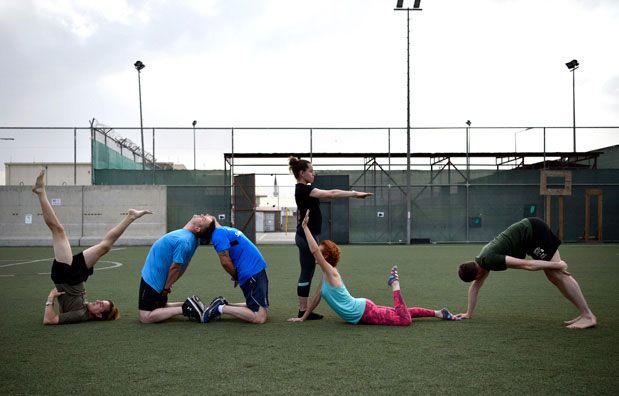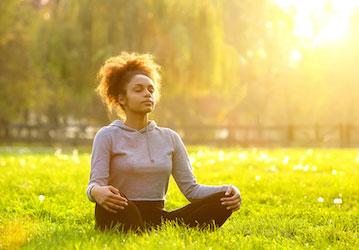 Unhealthy stress—when you’re stressed too often or for too long—can have a negative impact on your health and weight-loss goals. When your stress response is on overdrive, your metabolism can slow down and you might find it harder to burn fat through exercise. You might also find it harder to maintain your exercise and healthy eating plans. Luckily, your body has a relaxation response system you can learn to use. Even better, there are relaxation response skills you can master to pump the brakes on your stress when it becomes unhealthy.
Unhealthy stress—when you’re stressed too often or for too long—can have a negative impact on your health and weight-loss goals. When your stress response is on overdrive, your metabolism can slow down and you might find it harder to burn fat through exercise. You might also find it harder to maintain your exercise and healthy eating plans. Luckily, your body has a relaxation response system you can learn to use. Even better, there are relaxation response skills you can master to pump the brakes on your stress when it becomes unhealthy.
Following is an overview of several relaxation response skills and resources you can use. As a part of this weight-loss challenge, pick at least one of these skills and try it out each day for a week. If you don’t like one after you try it, try another one next week. The goal is to find one or two relaxation response skills that you can practice regularly. Regular practice will help you to become an expert in a skill, so you can effectively calm yourself down when needed. Each of these skills also provides many other health and performance benefits that come with regular practice.
Deep-breathing exercises can slow your breathing by using steady, full breaths and longer exhales. Doing this activates your relaxation response, which in turn relaxes your muscles and sends feedback to your brain that all is well. Regular practice can help reduce symptoms associated with anxiety, insomnia, post-traumatic stress disorder, and depression. To learn more, read about how deep-breathing works and watch HPRC’s videos of deep-breathing exercises.
Progressive muscle relaxation (PMR) is a practice in which you tighten and relax various muscles throughout your body. You can start with your feet and work your way up your body as you tighten each muscle group for 5 seconds and then relax for 20–30 seconds. Do at least 2 or 3 reps for each muscle group—or more if you still notice tension. Regular practice can help relieve the physical symptoms of stress, by lowering blood pressure, lessening fatigue, and easing tense, aching muscles. To learn more, listen to HPRC’s audio guide for progressive muscle relaxation.
Mindfulness meditation is the practice of focusing your awareness on the present moment without judgment. It’s simply being aware of what you’re experiencing now rather than thinking about the past or the future. A common approach is to focus on a physical experience such as your breathing, noticing where and when your attention wanders, and gently guide your attention back to your breath. Regular practice can help increase your memory and ability to concentrate, lower your perception of stress and anxiety, and improve your health. To learn more, read HPRC’s overview of mindfulness and listen to HPRC’s audio guide to practice a mindfulness meditation.
Yoga is a practice that combines stretching exercises, breathing techniques, and meditation. There are many different types of yoga you can do at home or at a yoga studio. Regular practice can help release stress, improve sleep, relieve pain, and improve health. Learn more about the different types of yoga and via these videos of yoga exercises you can practice at home.
After you review each of these relaxation response skills, choose one to try for a week, and track your results using the Relaxation Skills worksheet.
Learn more at our “Get into Fighting Weight” guide.
